When you select a species of bamboo for your landscape, one of the most important criteria is always going to be the climate. Most gardeners who want to grow bamboo in North America will look for temperate varieties. There are, after all, dozens if not hundreds of ornamental bamboo species that can tolerate sub-freezing temperatures. Whether it’s in zone 8 which seldom dips below freezing, or up in Canada where it can get minus 10 or 20º F, there’s a bamboo for nearly everyone. But if you’re growing bamboo in the humid heat of Florida or the Deep South, you are open to a whole jungly world of tropical and subtropical bamboo.
Florida, Alabama and other parts of the Deep South have some of the best bamboo growing conditions in North America. Tropical species that would languish or die in climates where the temperature commonly falls below 30º F can serve as spectacular specimen plants down in zones 9 and 10. These tropical bamboos include some of the most stunning and impressive species, the kind that can turn vibrant colors and grow several inches in diameter.
You don’t need to live in a subtropical climate to grow bamboo. But there’s a bounty of clumping bamboo that can only thrive in a warm, humid climate with little or no chance of frost. In the following article, we’ll look more closely at those climates and growing conditions, and examine some of the most interesting and appealing bamboo species for those parts of the country.
NOTE: This article first appeared in January 2021, most recently updated in May 2024.
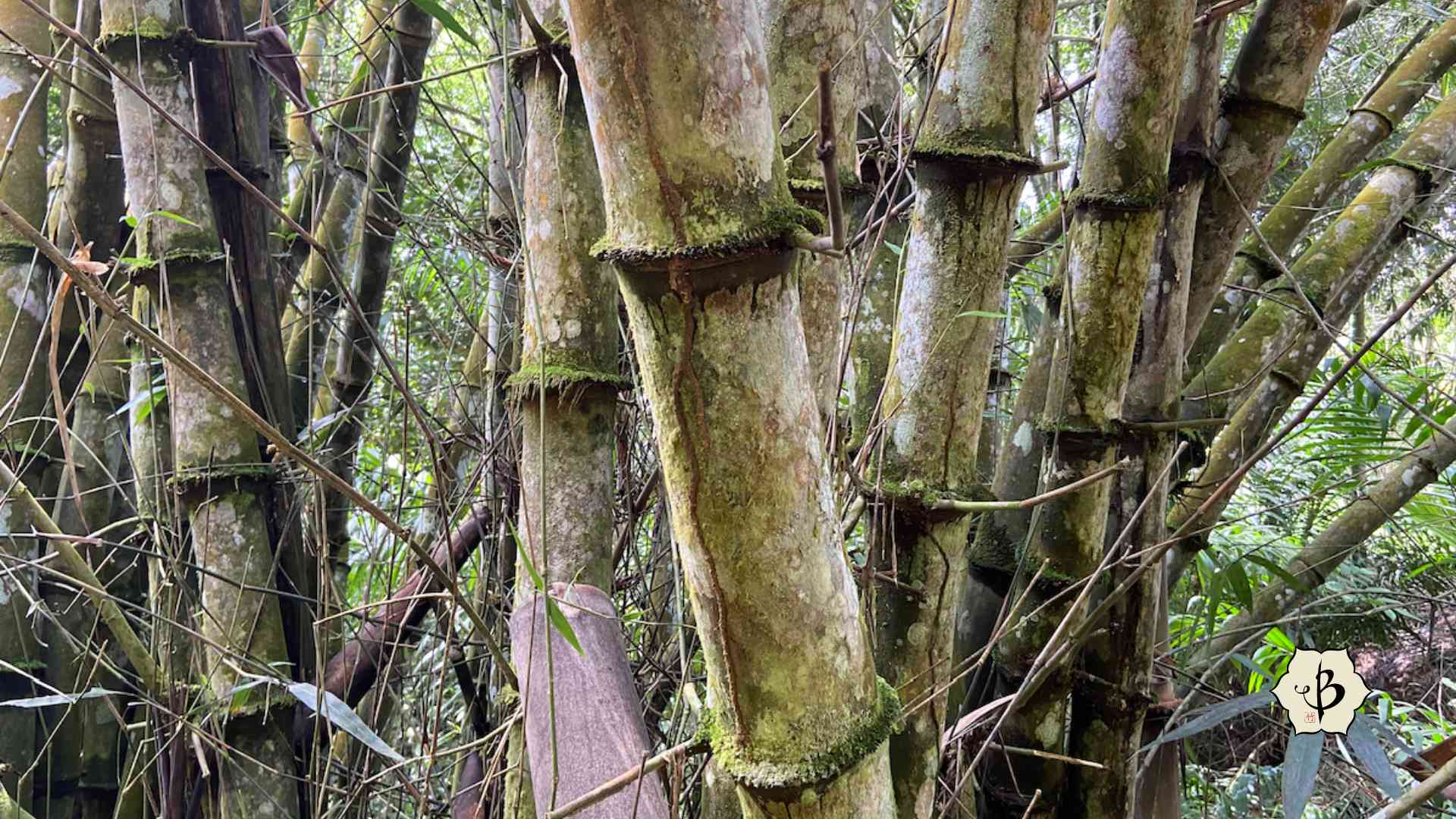
What do we mean by tropical bamboo?
Tropical bamboo is a loose term that can refer to a great variety of bamboo genera, but they typically have clumping root systems and little tolerance for cold and frost. These are distinct from temperate bamboos, which mostly have running rhizomes and tend to be much more cold-hardy.
But this is not a hard and fast distinction. It’s more of a gradual spectrum, and there are a number of exceptions. The genus Fargesia, for example, has clumping roots, but they are among the most cold-hardy of any bamboo. Often they are hardy to -20º F or lower, making them a popular choice in Europe and Canada.
The genus Phyllostachys is probably the most widespread of temperate bamboos, both hardy and vigorous. Then there’s a wide gray area of bamboos that are only somewhat hardy, withstanding temperatures of 10 or 20º F. Some of these mid-range bamboos include clumpers like Chusquea, or runners like Chimonobambusa.
We usually think of the genus Bambusa as a tropical bamboo, but some of those species are frost-tolerant while others are not. It’s more appropriate to think of these as subtropical. Truly tropical genera like Guadua, Dendrocalamus and Gigantochloa will not perform well if there’s any risk of frost, and they will not survive prolonged freezing. We’ll look at more specific examples below.
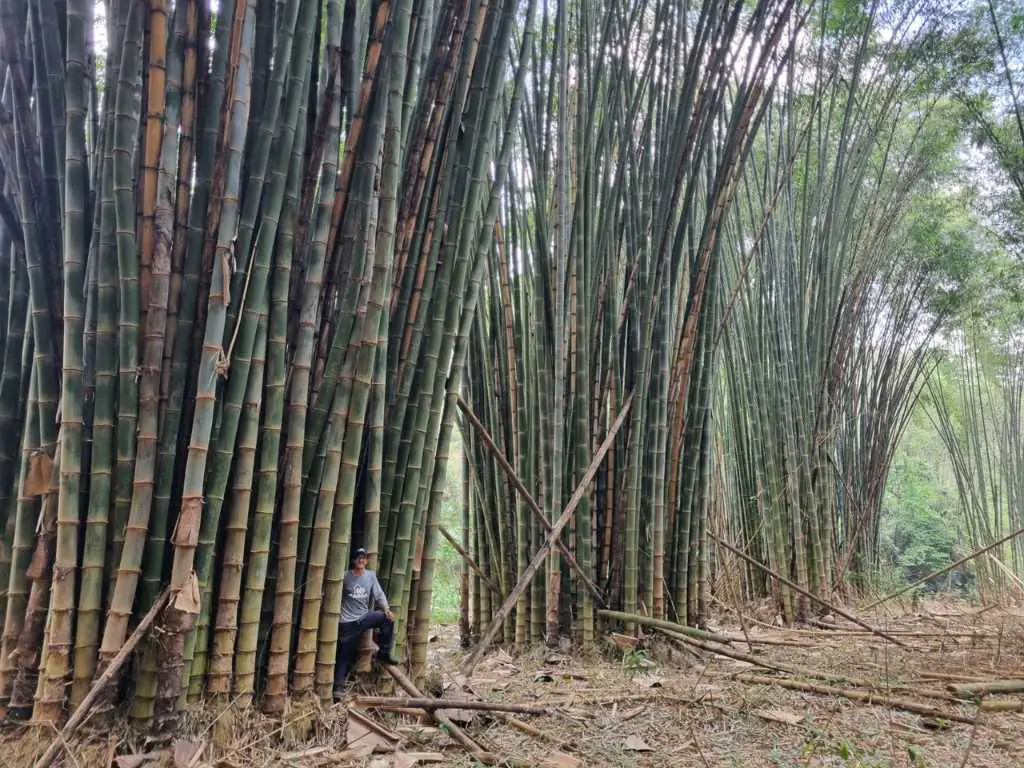
Conditions for tropical bamboo
As any citrus farmer will tell you, sunshine makes the plants grow, but frost can be a deal-breaker. That’s why you see orange groves covering vast areas of Florida and Southern California. The weather in those parts is not only ideal for citrus, it’s also loved by retirees, beachcombers and a host of bamboo species.
There is only one genus of bamboo native to North America, Arundinaria, and they are temperate. If it’s tropical bamboo you’re after, you’ll have to look to Southeast Asia and Indonesia, or to Central and South America. These are warm, wet climates where it never freezes and the temperature fluctuation between times of day and times of year is pretty minimal.
To find similar conditions in the US, your best bet is either Hawaii or Florida. Even in Southern California, where it seldom freezes and never for a long period of time, the difference between daytime and nighttime temps can be surprising. It’s also exceptionally dry. A tropical bamboo might survive someplace like central California or even Oregon, but it needs at least subtropical conditions in order to truly thrive.
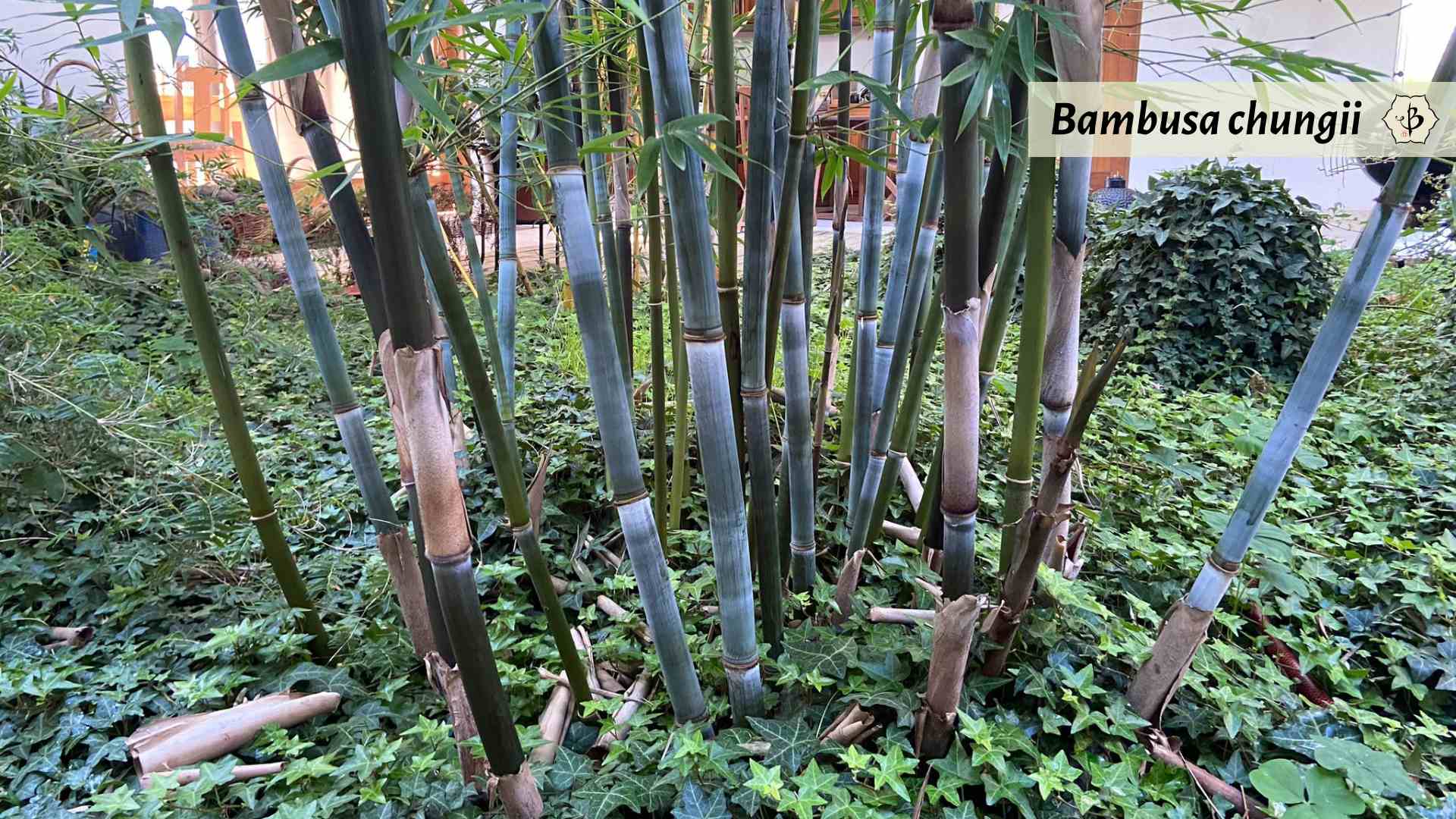
Bamboo in Florida and the Deep South
There’s a certain stigma attached to bamboo, because of its aggressive growth habit. But this only a problem with running bamboos, which are far more common in the cooler regions of the country. The heat and moisture of the Deep South makes the area susceptible to aggressive and invasive species, but tropical bamboos are non-invasive. Even if these species are exotic and non-native, their clumping growth habit poses little risk for the surrounding habitat.
Most temperate bamboo species can also grow in the South. So if you want to grow an attractive ornamental that happens to be a runner, no problem. Just be sure it’s well contained. They are a few types of bamboo, however, that really prefer cooler climates. So you may have to avoid varieties like Himalayacalamus.
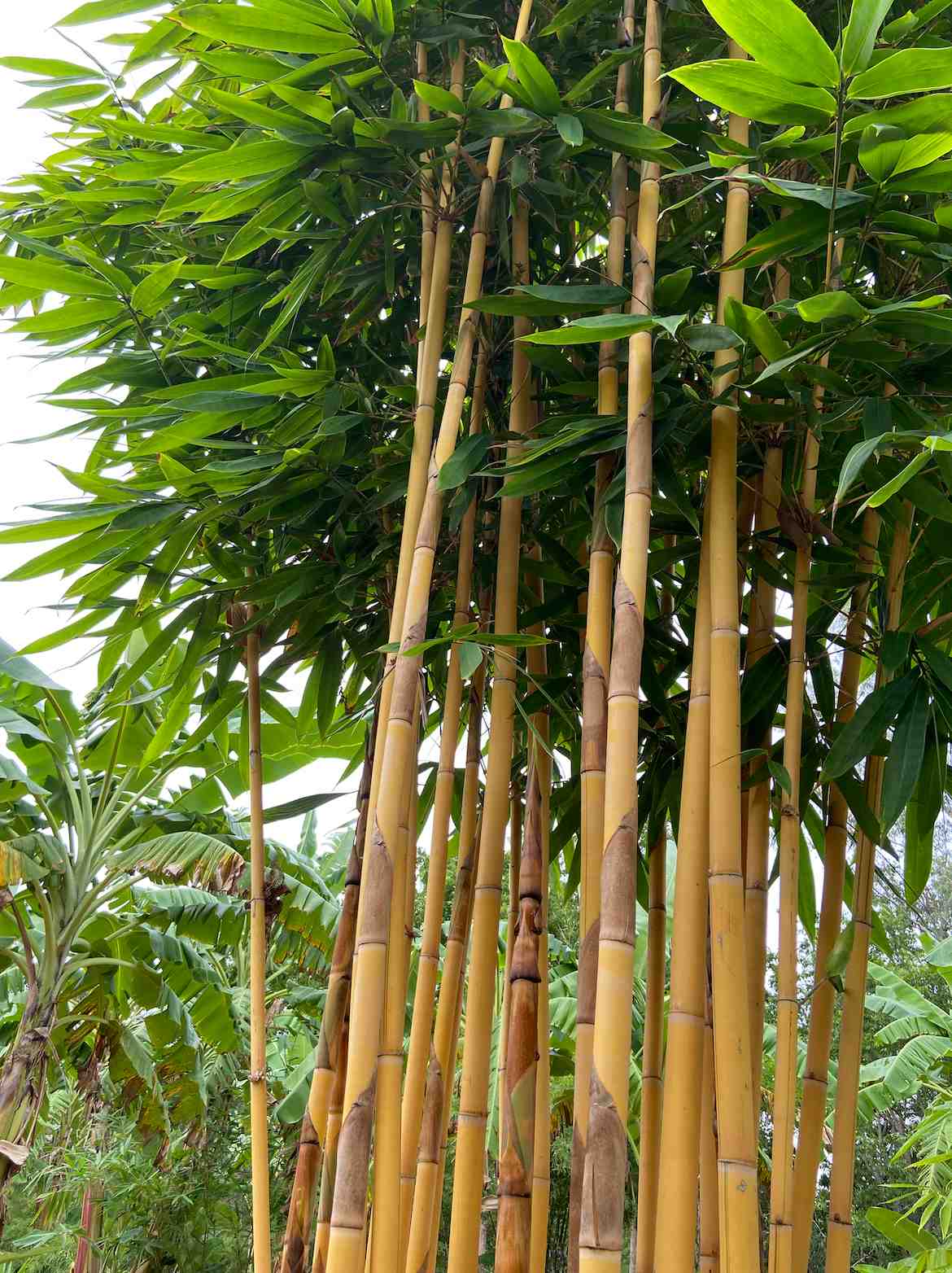
Even though the tropical bamboo doesn’t spread, it can reach towering heights, especially in the right climate. There are certain tropical bamboos that can survive further north and in cooler climates. But to achieve their full potential, they really need that subtropical influence. That’s why growing bamboo in Florida and the Deep South can be so fun and rewarding.
For that reason, you’ll also find some of the country’s largest bamboo growers in Florida and Alabama.
- Bamboo Forever, 2180 Snow Hill Rd,. Oviedo, FL 32766 (321) 578-0898
- Beautiful Bamboo, 18404 Howey Rd, Groveland, FL 34736 (352) 429-2425
- Tropical Bamboo Nursery, 2929 G Rd E, Loxahatchee, FL 33470 (561) 784-2413
- Lewis Bamboo, Creekview Rd, Oakman, AL 35579 (877) 796-2263
Tropical bamboo species for ornamental gardens
Bamboo enthusiasts can have a genuine field day in the Deep South. It seems like the selection of tropical bamboo is almost endless, and new species are being imported or discovered all the time. Here’s a good overview to get you started.

Genus Bambusa
The most widespread genus of bamboo, indigenous throughout Asia and Oceana, Bambusas are tropical and subtropical, clumping bamboos. They are incredibly diverse in terms of size, appearance and distribution. Some of the more tropical species are especially spectacular. North of Orlando, these subtropical bamboos will generally do better than the other genera listed below.
- Bambusa chungii, or Tropical Blue Bamboo, is one of the most beautiful and distinctive species. Blueish-green and greenish-white culms grow up to 30 or 35 feet tall and 3-4 inches thick, and make a striking impression. Native to Vietnam and Southeast Asia and commonly seen in Hong Kong. Ideal as a specimen plant or a tall privacy hedge.
- B. chungii ‘Barballata’, also called Barbie or Blue Hedge, the slightly shorter and more compact subspecies, is also very popular due to its tight footprint.
- B. lako, or Timor Black, is an excellent alternative to the fast-spreading and potentially invasive Phyllostachys nigra. This clumping species is easier to control, but also produces spectacular canes, up to 50 or 60 feet tall and easily 4 inches thick. New shoots come up bright green, but turn shiny, black with age.
- B. textilis ‘Gracilis’, aka Graceful Bamboo or Slender Weavers, has a most elegant appearance and a very tight, clumping growth habit. Excellent as a centerpiece or in a narrow space. Slender culms grow 25-30 feet tall, with some gentle arching.
- B. vulgaris ‘Vittata’, or Painted Bamboo, and sometimes called Golden Hawaiian Bamboo, is a cultivar of B. vulgaris, or common bamboo. Bright yellow culms with shiny, green stripes make it one of the prettiest and most recognizable varieties. Culms can get 40-50 feet high and 4 inches in diameter.
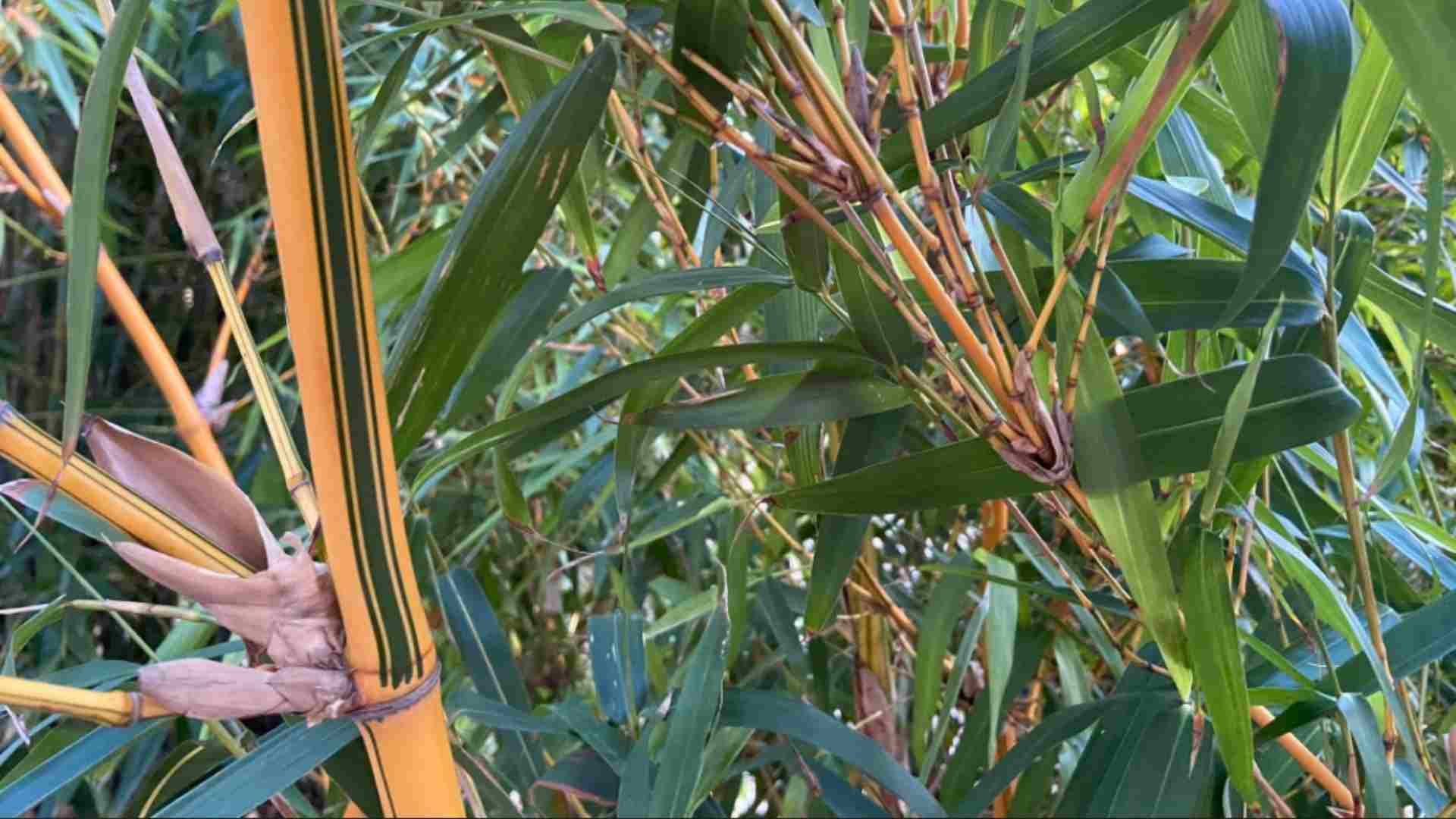
Genus Dendrocalamus
This genus includes some of the largest and most impressive varieties of giant bamboo, native to Southeast Asia and Indonesia.
- Dendrocalamus asper is one of the most important bamboo species in Indonesia, a massive timber variety with thick culm walls, ideal for building and construction.
- D. giganteus is even larger than the well-known D. asper, and perhaps the largest bamboo of all. Sometimes referred to simply as Giganteus or the Giant, its culms can get 100 feet tall and an astonishing 12 inches thick. Culm walls are thin though, so it’s not optimal for building.
- D. minor ‘Amoenus’ is one of the smaller members of this genus, but no less beautiful. Canes grow 30-40 feet tall, emerging silvery-green and gradually turning yellow with sporadic striping. This is a cultivar of D. minor, or Ghost Bamboo, which is almost identical but without the stripes.

Genus Gigantochloa
The large genus includes about 70 species of tropical bamboo, widespread throughout southern Asia and New Guinea. Their large leaves and thick foliage make for some very attractive ornamental specimens. Many species are popular in the warmer parts of the US, like Florida, Hawaii and the Deep South.
- Gigantochloa atroviolacea, also known as Java Black, is another great clumping alternative to the more common black bamboo. Similar to Bambusa lako (Timor Black), but with more arching culms. Canes grow 40-50 feet tall and 4 inches thick, turning black more quickly, but not as shiny.
- Gigantochloa atter, another very tall and upright black bamboo, with thick culms that make an excellent construction material.
- Gigantochloa sp. ‘Rachel Carson’ is one of the most popular species in this genus, with colorfully striped leaves and culms, sometimes white and even pink. Canes grow a modest 25 feet tall and provide a good privacy screen.
- Gigantochloa wrayii is a fine option for small spaces, with poles reaching 20-25 feet in height. Slender culms and dense greenery make this an optimal choice as a privacy hedge.
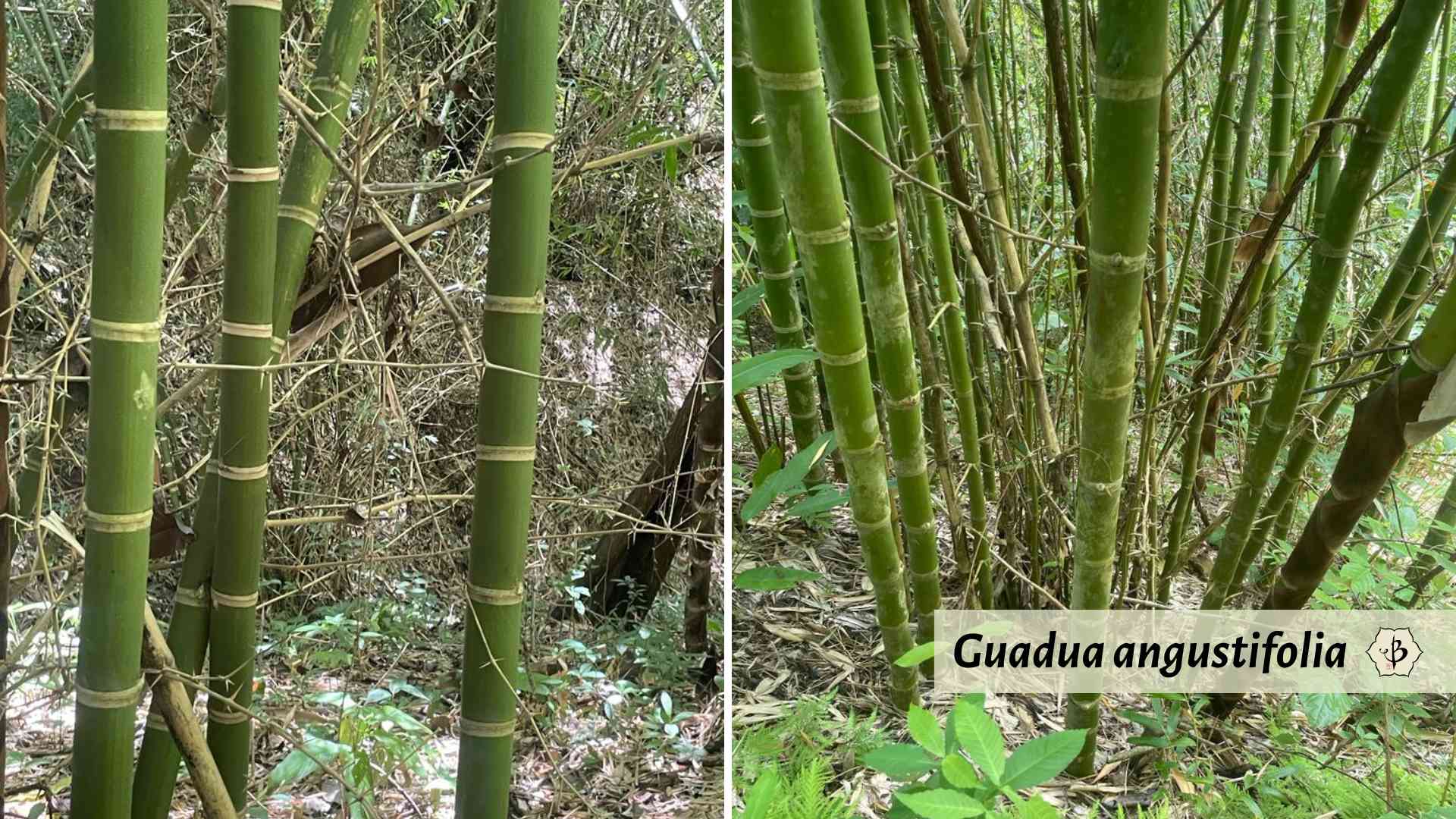
Genus Guadua
Primarily native to the equatorial highlands of Colombia, Venezuela and Central America, these neo-tropical bamboos are extremely important economically, but difficult to grow at lower elevations and higher latitudes.
- Guadua angustifolia is the largest and most important species of bamboo in the New World. Native to Central and South America, they have long provided a vital resource for building material. G. angustifolia has massive culms that can exceed 100 feet in height, with a diameter of 5-6 inches. But I’ve never heard of anyone growing it in the US, not even southern Florida.
Genus Schizostachyum
One of the larger genera of bamboo, with more than 70 species, but the plants themselves are modest in size. They grow throughout Southeast Asia, as well as Madagascar and Polynesia.
- Schizostachyum brachycladum, or Sacred Bali Bamboo, is another beautiful specimen from Southeast Asia. Bright yellow culms have a thin, dark green stripe, accompanied by deep green, bushy foliage, resulting in a very attractive aspect. Canes are majestic and upright, growing 40-50 feet tall and 2-3 inches thick.
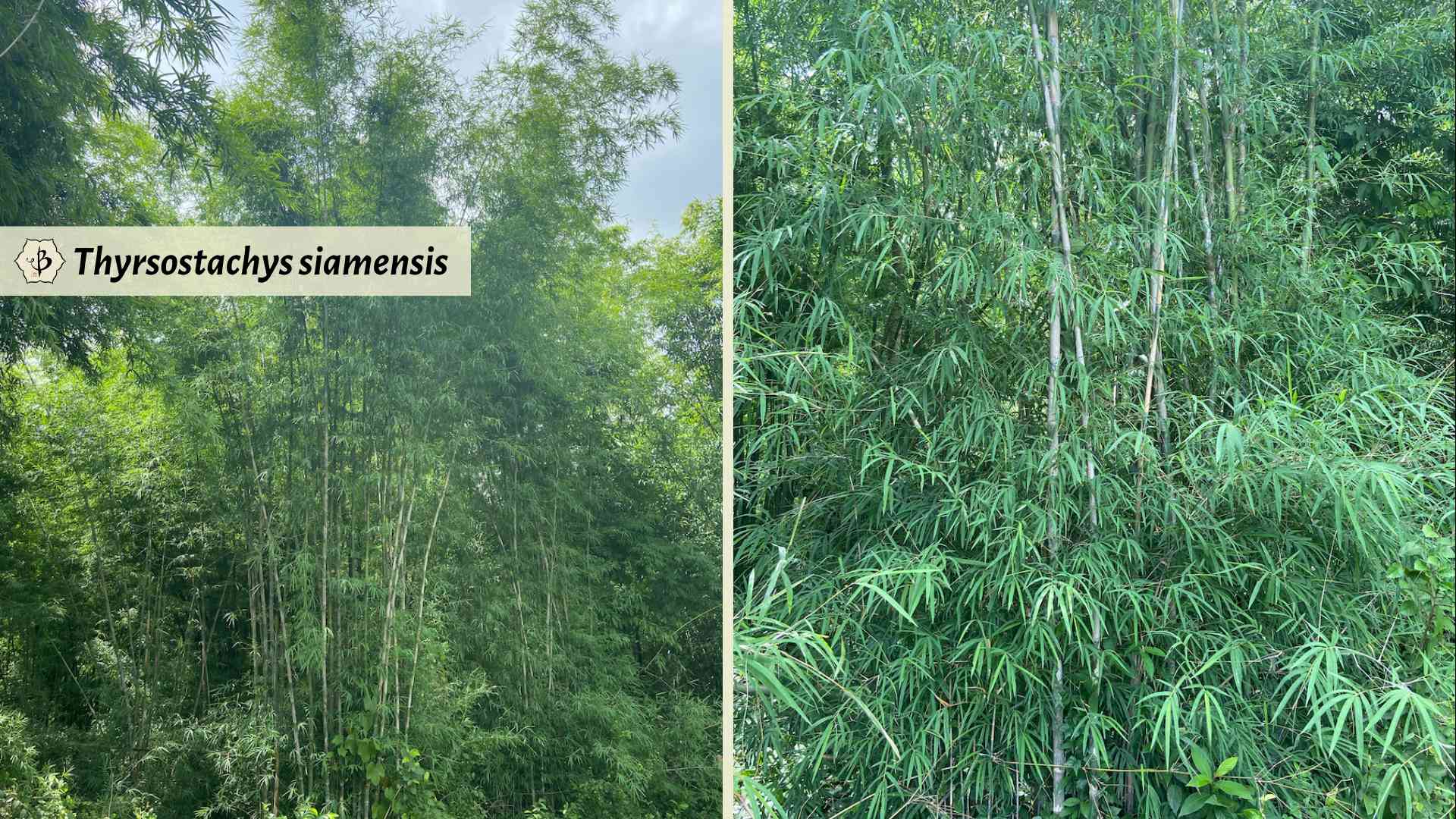
Genus Thyrsostachys
Primarily native to Indochina and Southeast Asia, this genus contains only two species, but one is quite popular among collectors.
- Thyrsostachys siamensis is also called Monastery Bamboo, Thai Bamboo or Umbrella Bamboo. This is a super tight clumper, making it a great choice in narrow spaces. It grows 20-30 feet tall, with slender, graceful culms, 2-3 inches thick. Canes are nearly solid and therefore excellent for building.
Learn more
If you enjoyed this article about growing tropical bamboo in Florida and the Deep South, please consider sharing it with your friends and subscribing to our blog. You might also be interested in some of these popular posts.
- Bamboo in Hawaii
- Bamboo in Georgia
- Bamboo in Kentucky
- Giant bamboo
- Water bamboo: Growing around ponds and wetlands
- Triple Hybrid Bamboo
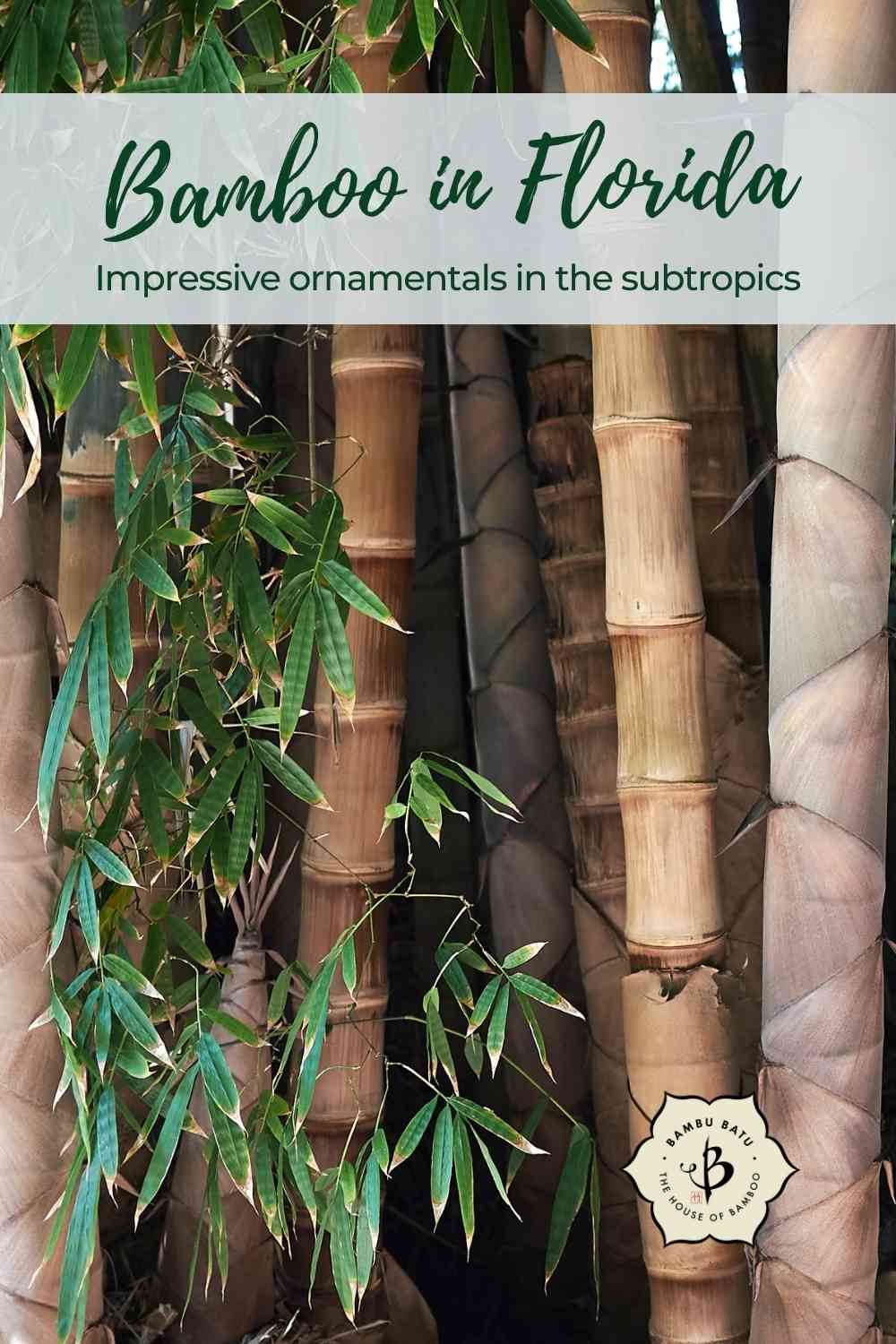
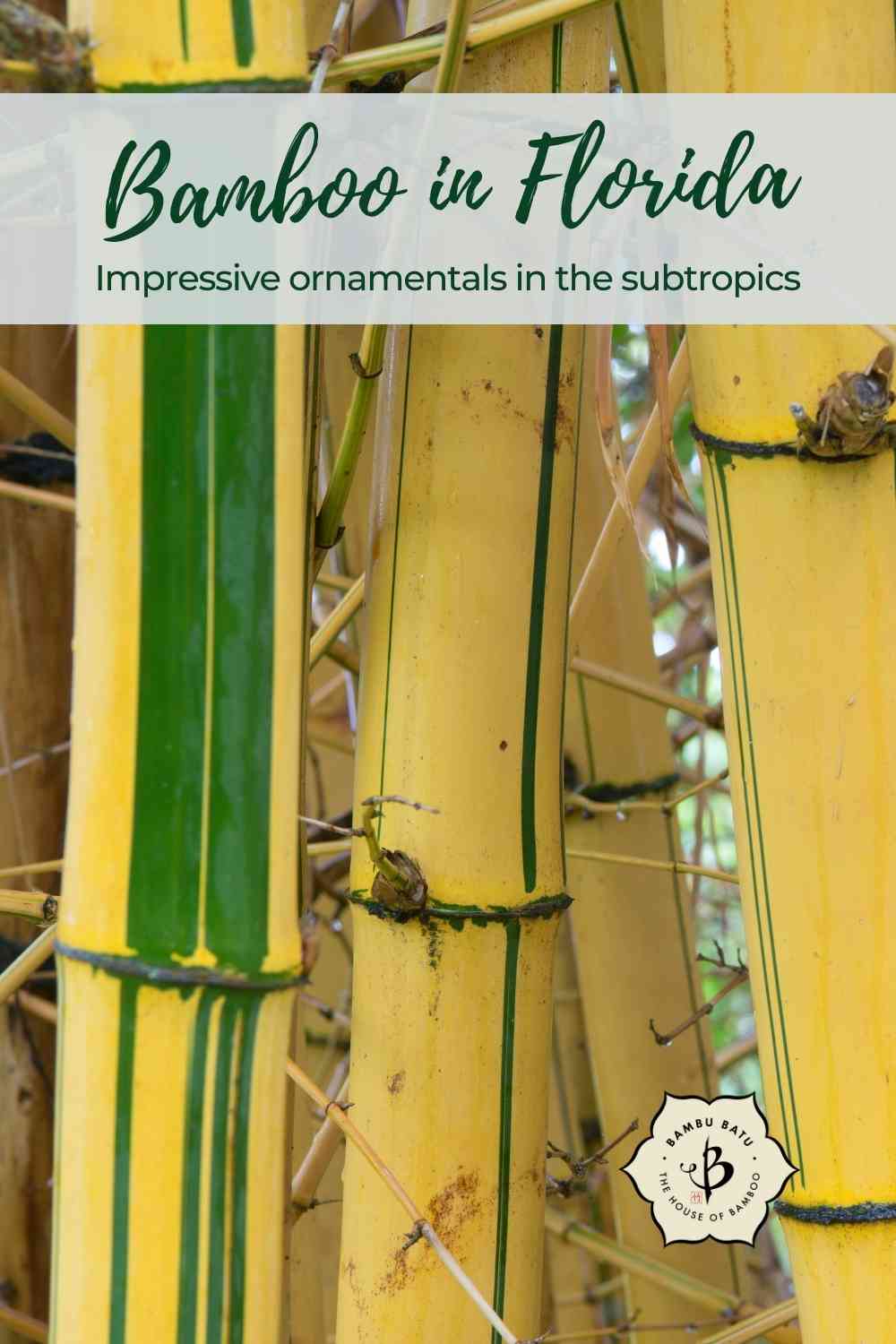

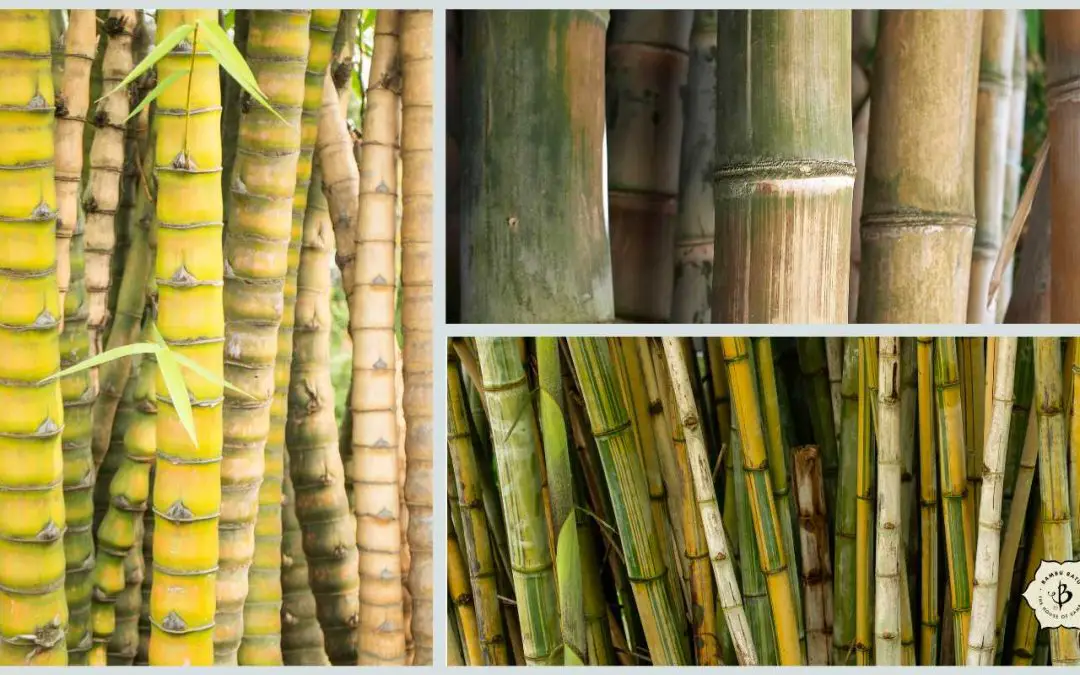



















Fred! Love your website man! I don’t usually write to people whose articles I read, but I felt compelled to!
Thanks for sharing all of your knowledge & insight with the world.
Your articles are such a helpful resource. Not to mention your personal ethos and what you stand for! Stewardship, sustainability. Excellent stuff.
Do good for the earth, do good for others, do good for yourself. Just do good… I dig it.
With the way Covid-19 is going, I’m really interested in owning a big plot of land (lots and lots of acres near a lake or a river, lol) and starting my own commercial bamboo farm.
I’m in the heart of citrus country Florida, USA.
I’ve been researching Only Moso’s partnership offering. Very interesting… Acquiring a property is probably my biggest challenge. It’s definitely a pipe dream at this point, but maybe, someday, in the future.
Not to mention have an awesome fruit & veggie permaculture garden like my Filipino grandparents used to have. Mangos, lychee, longan, Jack fruit, kalamansi. Yum!
Anyways. Thanks again for shining a light on the interesting world of bamboo. Appreciate what you do! Where ever you and your tribe are, hope you all are well.
Take care!
Gratefully,
Firefighter Nate from Polk County!
Nate! Thank you so much for the positive feedback. So glad you found the website helpful and inspiring. My current dream is to plant a giant bamboo grove and establish a spiritual center with glamping spaces, and swimming nearby!
Great concept Fred! Sounds restorative, peaceful and relaxing. A real oasis. I would visit! Let me know when you open!
hi Fred, I am new to bamboo was introduced to the bamboo by my father now I can’t get enough information how to grow, what kind of bamboo to grow and how to use that fine plant. Your website is awesome and full of helpful information. Thank you
Hello and welcome the club! May your journey with bamboo be long and fruitful.